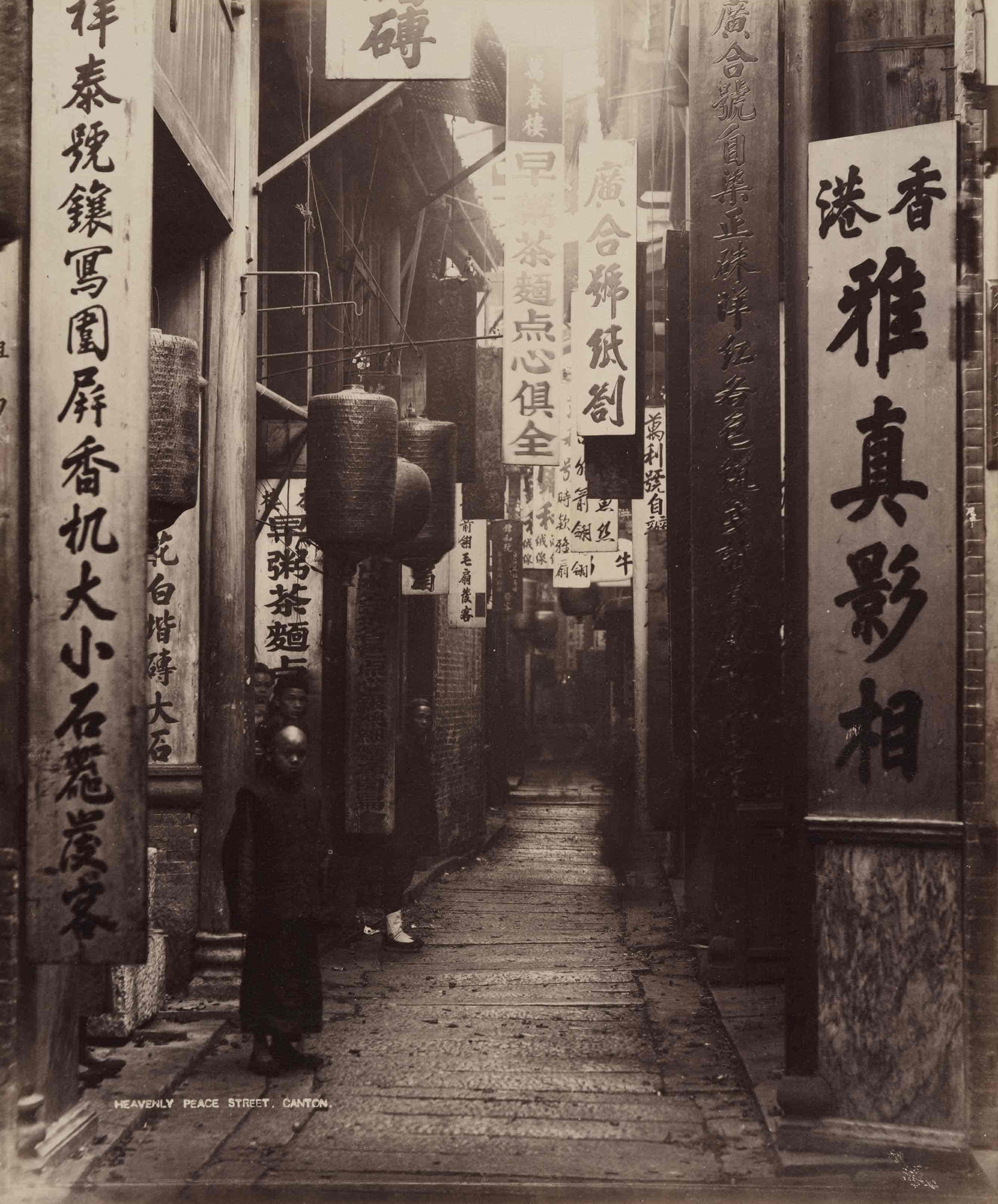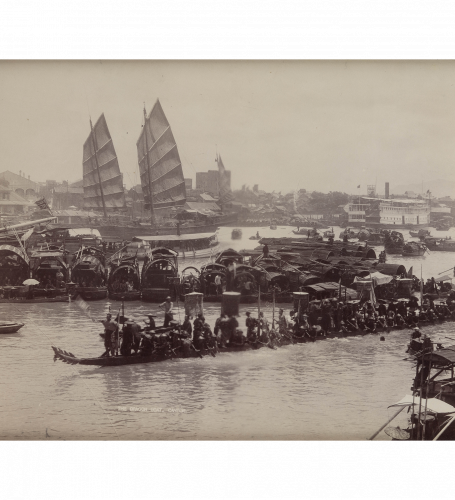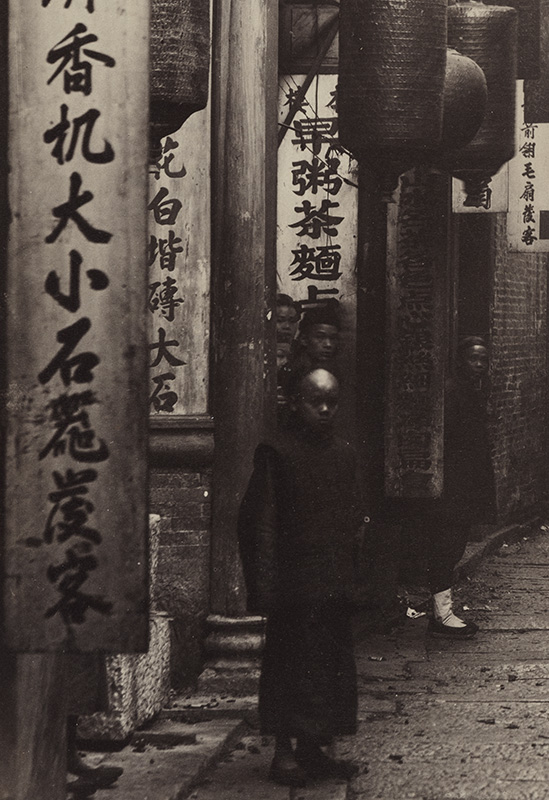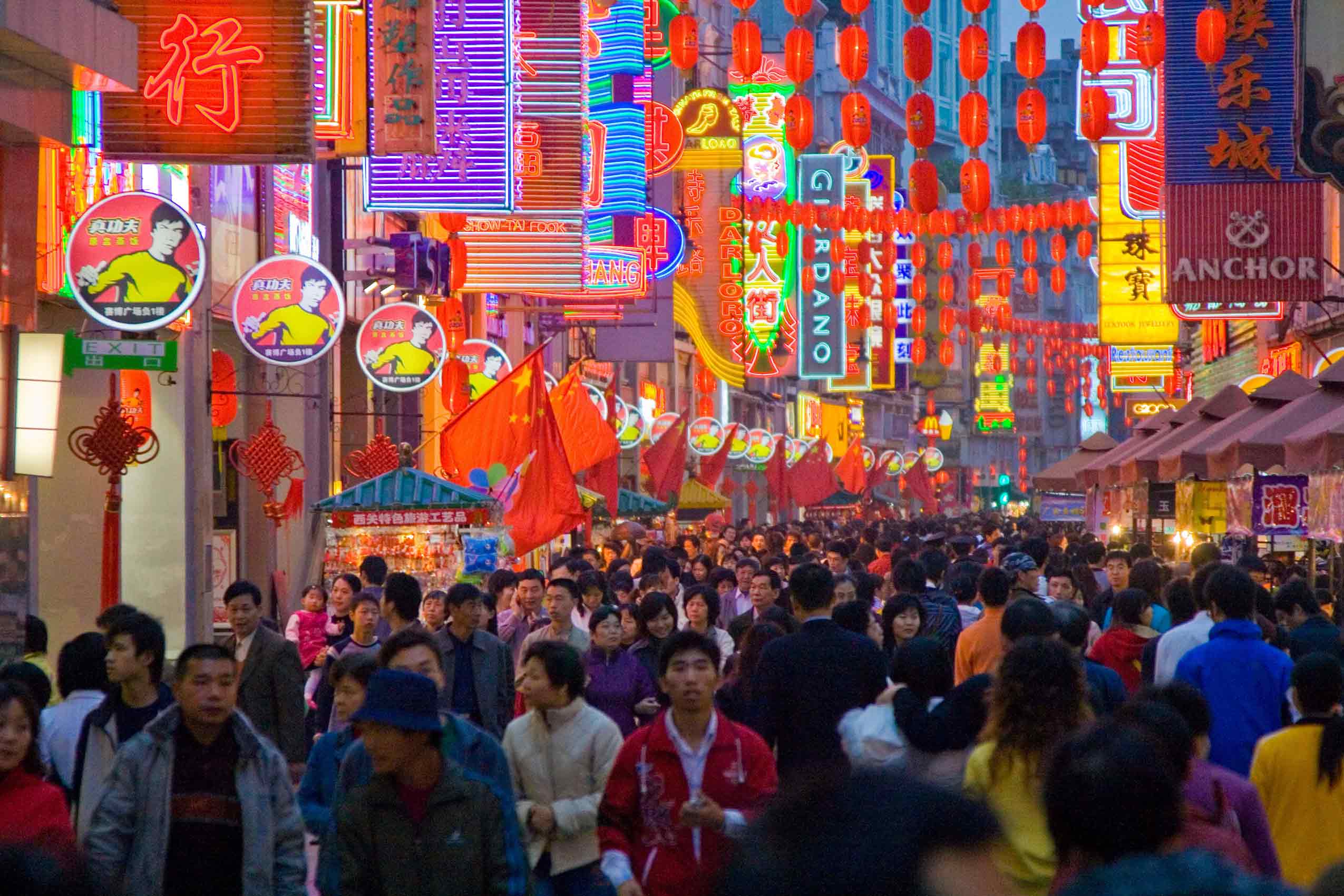

A Chan (Ya Zhen) Studio
1870s
Albumen silver print
29 x 21 cm
From the Loewentheil Collection
雅真影相
1870年代
蛋白印相
29 x 21 cm
洛文希尔收藏
The Loewentheil Collection includes one of the most comprehensive selections of photographs by A Chan Studios, including fine hand-colored prints. This major Chinese photography studio is significant for its photographs of Chinese traditions and customs and its images of landmark sites and buildings. The studio specialized in photographs of local culture, and the images are unparalleled in their ability to convey life in late Qing Dynasty China.

A Chan (Ya Zhen) The Dragon Boat. Albumen silver print. 1870s.

Street photography has been an enduring art form since photography’s invention. But only a master photographer could overcome the technical difficulties presented by Heavenly Peace Street, a narrow alleyway with little light. In this view A Chan (Ya Zhen) Studio created an exceptional negative containing great clarity, depth, and an expression of the vitality of the booming businesses along the street. This early view is characteristic of the art of capturing moments of urban life with the camera. It is one of the first examples of artful social documentary photography in China. The view prominently depicts a shop sign for the photography studio at the right side of the image. The photographer posed figures on the street to portray some of the inhabitants of the shops and reveal the scale of the narrow alleyway. Figures peer out from behind a variety of signs for shops offering a wide range of goods: tea, noodles, dim sum, paper products, stone tortoises, and floor bricks.
The image, with its precisely timed light cascading onto the otherwise dark alley, is at once a work of art and a fascinating glimpse of everyday life for people living in nineteenth-century China. Heavenly Peace Street developed into a commercial street named Tian Ping Jie during the Yuan (1279-1368) and Ming (1368-1644) Dynasties. In the Ming Dynasty, paper and ink traders gathered in this area making it one of the most vibrant printing industry districts in Guangzhou.
In 1931 the local government renamed the street, calling it Tian Cheng Lu 天 成路, Heavenly Accomplishment Road. From 1966 to 1976, the road was renamed Hongshu Nan Lu 红书南路, Red Book South Road, and in 1982 it reverted to Heavenly Accomplishment Road. Today, it is once again one of the most active locations for the printing industry in Guangdong Province.
In the late Qing Dynasty Guangzhou played an indispensible role in the development of photography in China. Many Chinese artists learned photography in the cosmopolitan city. A Chan (Ya Zhen) Studio opened a branch there to provide photographs for a diverse clientele.
Street Photography in Guangzhou
The Loewentheil Collection includes the earliest street photography created in China.

Commercial Business in Guangzhou
The large sign on the right advertises the A Chan (Ya Zhen) Photography Studio 香港 Xianggang [Hong Kong] / 雅真影相 Ya Zhen yingxiang/jing soeng [A Chan (Ya Zhen) photography]. The sign likely marks the entrance to A Chan’s studio in Guangzhou while noting the existence of a branch of the studio in Hong Kong. The sign holds critical information about early photography of China. The absence of English words in the photographer’s sign dispels the erroneous notion that nineteenth-century photographs of China focused on foreign clientele. The sign clearly demonstrates the predominance of Chinese clients for the A Chan (Ya Zhen) Photography Studio.
Located on the Pearl River Delta, Guangzhou has a history of over two thousand years. It was a major port along the maritime Silk Road. The urbanization and diversity of Guangzhou created a rich street life that artists were eager to capture with the invention of photography.
The city continues to serve as a major port and transportation hub. It is one of China’s three largest cities. Street life in Guangzhou continues to attract contemporary Chinese and international photographers.

Shangxiajiu Pedestrian Street
Liwan District, Guangzhou China
For permissions and inquiries please contact:
446 Kent Avenue PH-A Brooklyn, NY 11249 USA